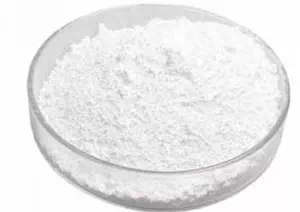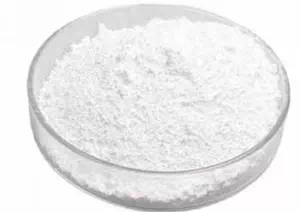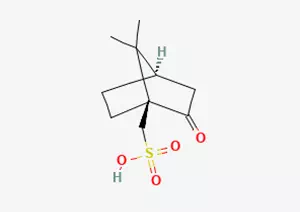All Categories



d-camphorsulfonic acid CAS 3144-16-9, d-camphorsulfonic acid, CAS 3144-16-9
Camphor sulfonic acid, in the field of chemistry, is sometimes abbreviated as CSA or 10-CSA for the convenience of expression and memory.
CAS : 3144-16-9
Formula : C10H16O4S
Mol. wt. : 232.3
EINECS : 221-554-1
Chemical Name | D-Camphorsulfonic acid |
Other Name | (1S)-(+)-Camphor-10-sulphonic acid; D(+)-10-Camphorsulfonic acid; D-Camphor-10-Sulfonic Acid; D-10-Camphorsulfonic acid |
CAS | 3144-16-9 |
EINECS | 221-554-1 |
Type | Food additives; Pharmaceutical raw materials; Organic raw materials; Flavor and Fragrance; Daily Chemicals |
Molecular Formula | C10H16O4S |
Molecular Weight | 232.3 |

Melting point | 196-200 °C (dec.)(lit.) |
alpha | 22 º (589nm, c=20, H2O 25 ºC) |
Boiling point | 344.46°C (rough estimate) |
density | 1.2981 (rough estimate) |
refractive index | 21.5 ° (C=5, H2O) |
storage temp. | Store below +30°C. |
solubility | Exhibit moderate solubility in HCCl. |
pka | 1.17±0.50(Predicted) |
form | Crystalline Powder |
color | White to off-white |
PH | 0.3 (200g/l, H2O) |
optical activity | [α]20/D +21.5±1°, c = 10% in H2O |
Water Solubility | SOLUBLE |
Sensitive | Hygroscopic |
Stability: | Stable. Protect from moisture. Incompatible with strong oxidizing agents, strong bases. |
Camphor sulfonic acid, in the field of chemistry, is sometimes abbreviated as CSA or 10-CSA for the convenience of expression and memory. It is an organic sulfur-containing compound with unique properties. Like typical sulfonic acids, it exhibits relatively strong acidic characteristics, and this acidity enables it to play an important role in numerous chemical reactions. At room temperature, camphor sulfonic acid presents as a colorless solid, with a pure and stable appearance. Moreover, it has good solubility. It can not only dissolve in water but also in a variety of organic substances. This characteristic provides convenient conditions for its application in various chemical systems.
In the field of drug research, optically active L - and D-camphor sulfonic acid hold an extremely important position. They are the key chiral enantiomers for resolving drugs. For natural camphor, dextroglucose can be prepared by the bromination sulfonation method. This process involves a series of complex and delicate chemical reaction steps, and the reaction conditions need to be strictly controlled to ensure the accuracy and purity of the product. In addition, the induction crystallization decomposition method can also be adopted to prepare racemic camphor sulfonic acid. This method also requires precise control of various factors in the crystallization process, such as temperature, solvent selection, and crystallization time, etc. Only in this way is it possible to obtain the ideal product.
Chiral structures are widely present in biological macromolecules and play an indispensable and important role in life systems. For instance, right-handed proteins are involved in many key processes of life activities, playing a unique role in various aspects ranging from cellular metabolic regulation to signal transduction. There is also double-stranded DNA. Its chiral structure is crucial for the accurate storage and transmission of genetic information. It determines the helical configuration of DNA and the way it interacts with other biomolecules. Due to the existence of asymmetric factors or the influence of groups composed of chiral atoms, chiral polymers exhibit unique structural characteristics and often form helical conformations. In this regard, Majidi et al. conducted in-depth and systematic research on chiral polyaniline. Since 1994, they have been constantly exploring the various properties and applications of chiral polyaniline and have achieved a series of research results. Recently, Yan Yong and others have made new breakthroughs in related research. They used D-camphor sulfonic acid (D-CSA) and L-camphor sulfonic acid (L-CSA) as dopants and successfully prepared dextroratory and levoratory nano-polyaniline through carefully designed experimental procedures and rigorous operation steps, opening up a new direction for the research and application of chiral materials. It is worth mentioning that camphor sulfonic acid has another name, namely receramic acid.

In the field of medicinal chemistry, D-camphor sulfonic acid plays a crucial role. It is often widely used in the resolution process of drug intermediates or isomers, playing a key role as a resolution agent. Through its unique chemical properties and mechanism of action, it can precisely and effectively separate drug intermediates or isomers, thereby providing important technical support for the research and development and production of drugs.
Not only that, D-camphor sulfonic acid also has significant applications in other aspects. For instance, it is also used as a dipeptide-binding stimulant, playing an active role in related biochemical processes and research, and is of great significance for a deeper understanding of the binding mechanism of dipeptides and related physiological processes.
In actual chemical research and experiments, (1S) -(+) - camphor-10-sulfonic acid is often used as a stabilizer. This substance has a specific chemical structure and properties, and can remain stable in complex chemical reaction systems, providing a reliable guarantee for the smooth progress of the reaction.
Under specific experimental conditions, when (1S) -(+) -camphor-10-sulfonic acid (D-CSA) or (1R) -(-) camphor-10-sulfonic acid was present, researchers adopted the method of direct potentiostatic electropolymerization to prepare chiral polyaniline (PANI) nanofiber acid (L-CSA). During this process, it is necessary to precisely control various experimental parameters to ensure the accuracy of the reaction and the quality of the products. Through strict control of conditions such as electrode potential, reaction time and reaction temperature, chiral polyaniline nanofiber acids can be synthesized smoothly and have good chiral properties and nanofiber structures.
In addition, tetrahydrofuran (QUAT) can also be prepared using (1)-(+) camphor-10 sulfonic acid as the raw material. During the preparation process, a series of elaborately designed chemical reaction steps are required to fully utilize the chemical properties of (1)-(+) camphor-10 sulfonic acid to gradually transform and synthesize tetrahydrofuran. This process involves the synergistic effect of multiple chemical reactions. Each step requires strict operation and precise control to ensure that the purity and quality of the final product meet the requirements.
* Prompt reply and 24 hours online, professional team to provide best price and high quality product.
* Sample testing support.
* Every batch of products will be tested to ensureits quality.
*The packing also can be according the customers` requirment.
*Any inquiries will be replied within 24 hours.
*we provide Commerical Invoice, Packing List, Bill of loading, COA , Health certificate and Origin certificate. If your markets have any special requirements, let us know.